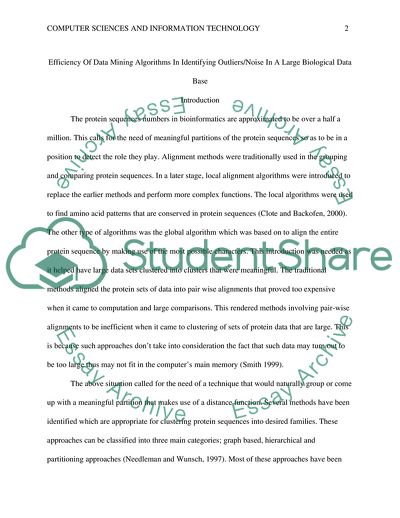Cite this document
(Identifying Outliers in a Large Biological Data Base Coursework Example | Topics and Well Written Essays - 1750 words, n.d.)
Identifying Outliers in a Large Biological Data Base Coursework Example | Topics and Well Written Essays - 1750 words. https://studentshare.org/information-technology/1778467-efficiency-of-data-mining-algorithms-in-identifying-outliersnoise-in-a-large-biological-data-base
Identifying Outliers in a Large Biological Data Base Coursework Example | Topics and Well Written Essays - 1750 words. https://studentshare.org/information-technology/1778467-efficiency-of-data-mining-algorithms-in-identifying-outliersnoise-in-a-large-biological-data-base
(Identifying Outliers in a Large Biological Data Base Coursework Example | Topics and Well Written Essays - 1750 Words)
Identifying Outliers in a Large Biological Data Base Coursework Example | Topics and Well Written Essays - 1750 Words. https://studentshare.org/information-technology/1778467-efficiency-of-data-mining-algorithms-in-identifying-outliersnoise-in-a-large-biological-data-base.
Identifying Outliers in a Large Biological Data Base Coursework Example | Topics and Well Written Essays - 1750 Words. https://studentshare.org/information-technology/1778467-efficiency-of-data-mining-algorithms-in-identifying-outliersnoise-in-a-large-biological-data-base.
“Identifying Outliers in a Large Biological Data Base Coursework Example | Topics and Well Written Essays - 1750 Words”. https://studentshare.org/information-technology/1778467-efficiency-of-data-mining-algorithms-in-identifying-outliersnoise-in-a-large-biological-data-base.


